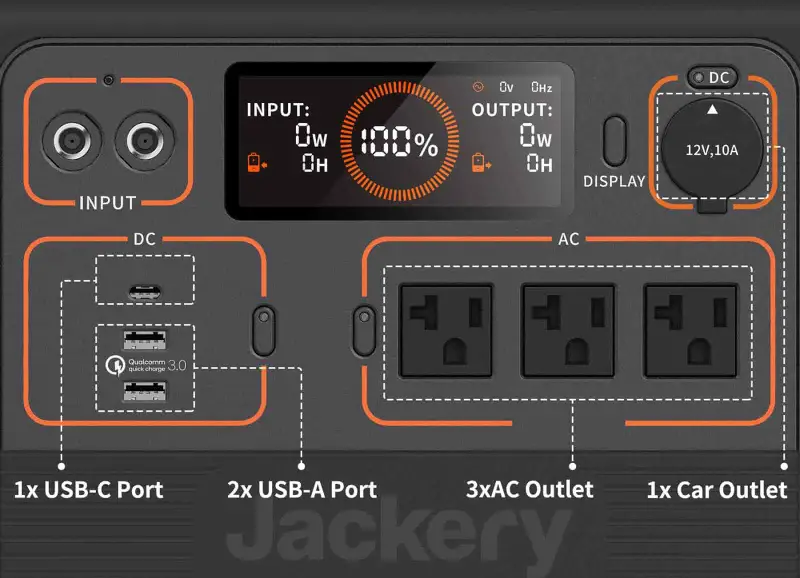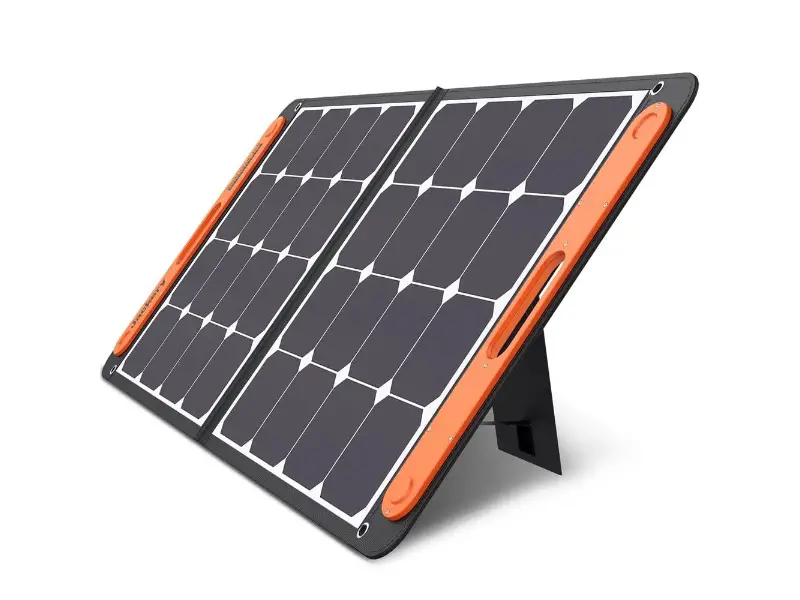There is no question that the demand for on-the-go power has increased dramatically over the past decade or so. As we’ve started to travel with more power-hungry electronic devices and other battery-operated tools, the need for keeping those items charged and operational while away from home has grown too.
Thankfully, the portable power station market has evolved to meet those needs, delivering a range of products that makes it easier than ever to stay productive and maintain communication no matter where we go.
One of the companies that have been at the forefront of this revolution has been Jackery, which has been designing and manufacturing portable power solutions for several years. In fact, I’ve reviewed a number of those products here on The Adventure Blog, often giving them high marks for features and dependability.
Recently I’ve had a chance to test the new Jackery Explorer 1500 portable power station, and true to form it delivers quite a bit for the money. But like similar products before it, there is a little room for improvement on future editions as well.

Now You’re Playing with Power
If you’ve ever used a Jackery power station, you probably already know what to expect from the Explorer 1500. It shares a similar designate the other products in the company line-up, right down to the distinctive orange color and the hefty handle on top. But what sets this newest portable charger apart is how much power it provides.
While Jackery has had options available in the 500-watt range and lower for some time now, it has recently expanded its catalog to include a 1000, 1500, and 2000 watt-hour version. With its 1488Wh battery, the Explorer 1500 holds down the middle position in that line-up, delivering as much as 1800 watts of power to everything from smartphones and tablets to laptops, power tools, and small appliances.
According to Jackery, the Explorer 1500 is so efficient that it can power an electric mini-cooler for up to 21 hours or a blender for 19 hours. It can even run a high-capacity appliance like a microwave for 68 minutes. In more relatable terms, that equates to recharging a smartphone more than 150 times or a typical laptop 14 times. And for those who take a CPAP machine with them when they go camping, you can expect about 27 hours of use on a single charge.

It’s All About the Port
One of the most important factors to consider when selecting a portable power station is how many ports it offers and how many devices it can charge at once. The Jackery Explorer 1500 delivers nicely in this area, providing the ability to plug in as many as seven gadgets and appliances simultaneously. That generally means you won’t have to wait for someone to stop using a port so that you can charge too, and it brings more versatility to the campsite.
The line-up of ports on the Explorer 1500 includes a 12-volt/120-watt car port (aka the cigarette lighter), which is handy but increasingly less useful in the modern age. It also comes with three AC outlets like the ones that you find in your home, as well as three USB ports—a standard USB-A, a USB-A QC (quick charging), and a USB-C PD (60-watt power delivery).
My one complaint—and this has been a regular one with Jackery power solutions—is that I’d like to see at least one or two more USB-C ports. This is the charging option for the future for most small devices and even some larger ones.
Shipping a power station with just one of these ports in 2021 seems somewhat short-sighted. And while it is possible to add a USB-C hub to add additional ports, that’s just one more item that you have to carry with you into the field.

Charging the Power Station
While the Explorer 1500 is adept at keeping our devices fully charged while in remote places, it too requires a recharge from time to time to remain functional. Jackery has conveniently provided three ways of using the outlet in your car, an AC adapter that plugs into a wall outlet at home or through solar power. In all cases, the massive battery that the power station uses charges more quickly and efficiently than I would have expected.
When plugging the Explorer 1500 into a car outlet—something I admittedly rarely do—it takes 13 hours to fully recharge the unit. That seems like a lot but is actually relatively quick considering the output of a standard car port. The included AC adapter will have the power station fully topped off in just 4 hours, which is very fast indeed. To accomplish that, however, the adapter itself is quite large.
In the field, the use of Jackery’s SolarSaga 100-watt solar panels is required to keep the Explorer line running. In the case of the Explorer 1500, four of those 100w panels can be plugged in at any given time.
On a clear day, with direct sunlight, that results in a charging time of just 4 hours, which is extremely quick. Of course, it requires lugging all four of the panels to your campsite, but if you’re using it as a base camp for a longer expedition, it seems well worth the effort.
The SolarSaga solar panels aren’t especially heavy or bulky, and they are quite durable. They’re simple to set up and use and can gather power at a surprisingly efficient pace when opened to the sun. They also feature a USB-A and USB-C port for direct charging, which helps alleviate my concerns over having a limited number of USB-C ports on the power station itself.

Power on the Go
The Jackery Explorer 1500 is a versatile and handy power station that will prove useful in various situations. But because it weighs just over 33 pounds (15 kg), it isn’t something that you’ll take with you on a backpacking trip or an excursion deep into the backcountry. For that, you’ll want to look towards one of Jackery’s smaller options or take a high-capacity battery pack instead.
That said, the Explorer 1500 is perfect in a base camp setting where you might set up a campsite with plans to stay for an extended period of time. It is also perfect for car camping and overlanding, providing lots of power that you can take with you wherever you go. Similarly, it will prove equally useful at a mountain cabin where power isn’t an option as well.
The portable power station can prove equally useful around home in an emergency use situation. Natural disasters can knock out power for extended periods of time and having a high-capacity back-up option—complete with solar panels for recharging—could be a lifesaver. Because of this, I tend to keep several power stations topped up on a charge for those “just in case” scenarios.
Priced Right (Relatively Speaking)
With its $1599 price tag, the Explorer 1500 is likely to have some shoppers sticker shock. Shop around a bit, however, and you’ll discover that this is actually quite a good price for the capacity, power, and port selection that it offers.
When buying a power station like this one the rule of thumb is that the larger the capacity the pricer it will become. That said, Jackery has managed to deliver quite a lot for the money, making this an attractive option for those in the market.
Adding a single 100-watt solar panel will set you back an additional $299.99. That means that if you need the full-capacity solar charging set up in the field, you’ll be out about $2800 total. That’s no small sum of money, but again if this is something you absolutely need while on an expedition, backcountry campsite, or a job site, this will seem like a small price to pay.
As usual, Jackery has knocked it out of the park with the build quality and performance of its power stations. The Explorer 1500 doesn’t disappoint in any way and will prove to be an extremely useful tool, whether you’re using it at home or on a grand adventure.
- Gear Review: The Xero Scrambler Mid is an Ultralight Hiking Shoe for Spring - March 1, 2023
- Gear Review: Yeti Roadie 48 Wheeled Cooler - August 18, 2022
- Kristin Harila Continues Pursuit of 8000-Meter Speed Record - August 16, 2022
